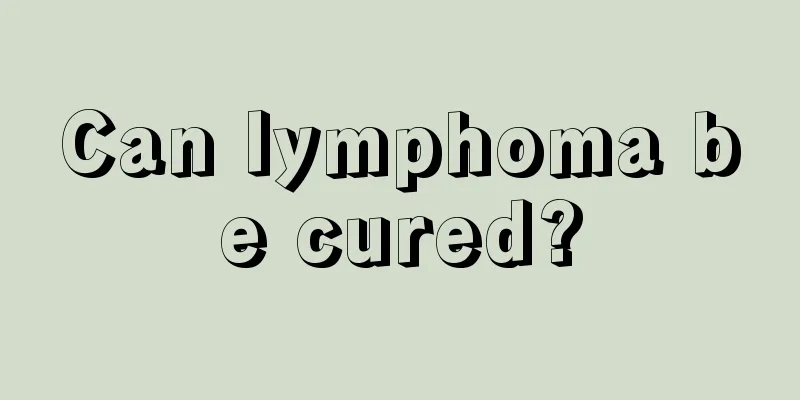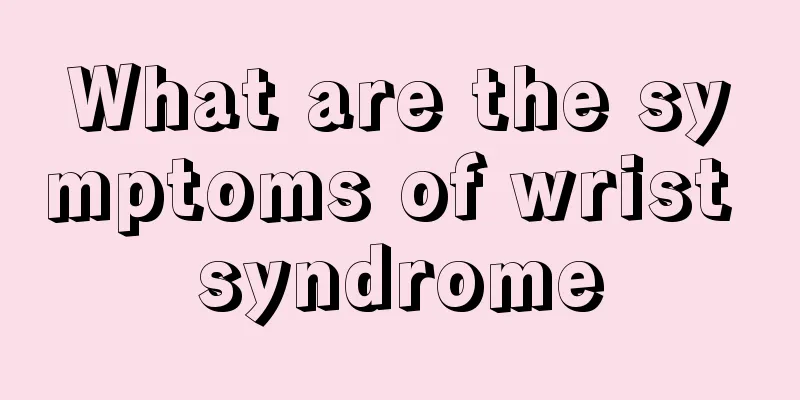Can lymphoma be cured?

|
In recent years, we have found that the incidence of lymphoma in China is increasing day by day, and it has now become one of the top ten malignant tumors in China. Many friends are concerned about this question: Can lymphoma be cured? The answer is yes. Lymphoma is a curable disease. Fifty to sixty percent of early patients can be cured using immunotherapy, chemotherapy, and targeted therapy. Incidence and causes: Lymphoma is a malignant tumor originating from the lymphatic system. It is mainly divided into two categories: Hodgkin's lymphoma (HL) and non-Hodgkin's lymphoma (NHL). Non-Hodgkin's lymphoma is more common in Chinese patients, accounting for more than 80% of lymphoma. With the rapid development of modern society in recent years, lymphoma has quietly squeezed into the list of China's top ten malignant tumors. Data show that the incidence of lymphoma in China is currently about 691,100, increasing at a rate of 5% per year, with about 50,000 new patients each year. Among them, the incidence of non-Hodgkin's lymphoma has rapidly increased from 2.1 million in the last century to 7.1 million. The cause of lymphoma has not yet been fully clarified. It may be related to some viruses such as Epstein-Barr virus infection, aggravated pollution of the living environment, excessive contact with organic solvents and dyes, and long-term exposure to electronic radiation. Clinical manifestations: Symptoms of non-Hodgkin's lymphoma include swollen lymph nodes (in the neck, armpits or groin), cough, shortness of breath, unexplained weight loss, low fever, excessive sweating (especially at night), etc. However, these symptoms are sometimes not very obvious and are often easily ignored by patients. The author believes that if the symptoms can be detected early and timely treatment is sought, the cure rate will be greatly improved. Some early signs are particularly noteworthy: 1. Progressive lymphadenopathy without clear cause, especially when the location, hardness, and mobility are consistent with the characteristics of malignant lymphoma. 2. "Lymph node tuberculosis" is not responding to regular anti-tuberculosis treatment, and "chronic lymphadenitis" is not responding to general anti-inflammatory treatment. 3. Lymphadenopathy and fever sometimes improve after treatment, but they often recur and the overall trend is progressive. 4. Unexplained long-term low-grade fever or periodic fever, especially accompanied by itchy skin, sweating, weight loss, and superficial lymphadenopathy. The author once again reminds all friends that if these abnormal conditions occur in the body, do not act on your own and go to a regular hospital for examination in time. Lymphoma is one of the most treatable malignant tumors. Many people's wrong understanding of cancer leads them to equate cancer with a terminal illness, and lymphoma is no exception. In fact, lymphoma is not a terminal illness, and advances in medical research have made lymphoma no longer a terminal illness. Generally speaking, the concept of "cure" of a tumor is related to the "5-year disease-free survival rate." Long-term observations have found that if a tumor patient has successfully passed the fifth year of treatment, the chance of tumor recurrence is less than 10%, and the patient can be considered cured at this point. "Although there is still a large gap in the treatment effects of different subtypes of lymphoma, the overall efficacy has been greatly improved, and it has become one of the best-treated malignant tumors among the few curable cancers." The main treatments for lymphoma include immunotherapy, chemotherapy, radiotherapy, molecular targeted therapy, etc. At present, chemotherapy is still the first choice for most lymphoma patients. If 3 to 5 chemotherapy drugs are used at the same time, the 5-year survival rate of patients with Hodgkin's lymphoma can be increased to 70% to 80%; the 5-year survival rate of patients with non-Hodgkin's lymphoma can be increased to 40% to 50%. Radiotherapy is mainly used to eliminate huge tumors in the body and residual tumors after chemotherapy. |
<<: Can gastric lymphoma be cured?
Recommend
Young breast cancer needs to be differentiated from benign breast diseases
Young breast cancer can be diagnosed through auxi...
Will it be hot to wear black clothes in summer?
Everyone knows that summer is a season with stron...
What does CK14 negative mean for breast cancer
Breast cancer CK14 is negative, which means that ...
What are the symptoms of lung yin deficiency?
Chinese medicine emphasizes the harmony of yin an...
How do I know if I have lung cancer? If you have these 4 abnormalities in your body, it may be lung cancer
When I was watching the news, I found a case of l...
Is it necessary to get cervical cancer vaccination at the age of 30?
It is still necessary to get the cervical cancer ...
Pain in the outer muscles of the upper arm
Our arms are always strained without us noticing,...
Cholestatic urticaria
In fact, the skin disease urticaria is also close...
How to quickly relieve frequent urination and urgency
When you experience frequent and urgent urination...
Is late stage rectal cancer contagious?
The age of onset of rectal cancer is mostly betwe...
What are the causes of occult blood in urine?
Many friends may not understand what urine occult...
What does sexual tension mean
Perhaps many people do not get a satisfactory sta...
Healthy dinner abides by the "four no" policy
There seems to be less mention of how to eat more...
Can I have a baby if I have 2-3 days of cervical precancerous lesions?
Normally, it is already a big worry for ordinary ...
What time is the best time to soak your feet at night
Nowadays, there are many new massage places such ...









